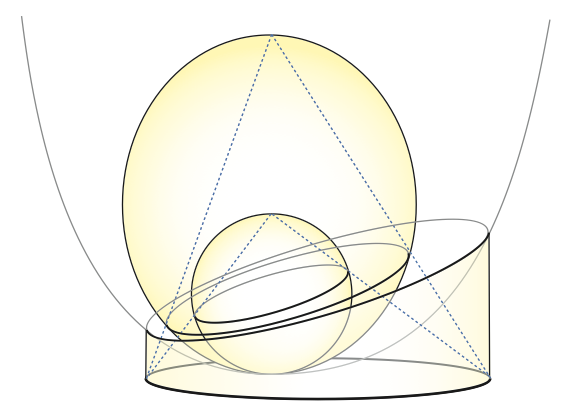Geometric Separators and the Parabolic Lift
CCCG: The Canadian Conference in Computational Geometry, 253-258
2013

A geometric separator for a set $U$ of $n$ geometric objects (usually balls) is a small (sublinear in $n$) subset whose removal disconnects the intersection graph of $U$ into roughly equal sized parts.
These separators provide a natural way to do divide and conquer in geometric settings.
A particularly nice geometric separator algorithm originally introduced by Miller and Thurston has three steps:
compute a centerpoint in a space of one dimension higher than the input, compute a conformal transformation that ``centers'' the centerpoint, and finally, use the computed transformation to sample a sphere in the original space.
The output separator is the subset of $S$ intersecting this sphere.
It is both simple and elegant.
We show that a change of perspective (literally) can make this algorithm even simpler by eliminating the entire middle step.
By computing the centerpoint of the points lifted onto a paraboloid rather than using the stereographic map as in the original method, one can sample the desired sphere directly, without computing the conformal transformation.
@inproceedings{sheehy13geometric,
Title = {Geometric Separators and the Parabolic Lift},
Author = {Donald R. Sheehy},
Booktitle = {Canadian Conference in Computational Geometry},
Pages = {253--258}
Year = {2013}}